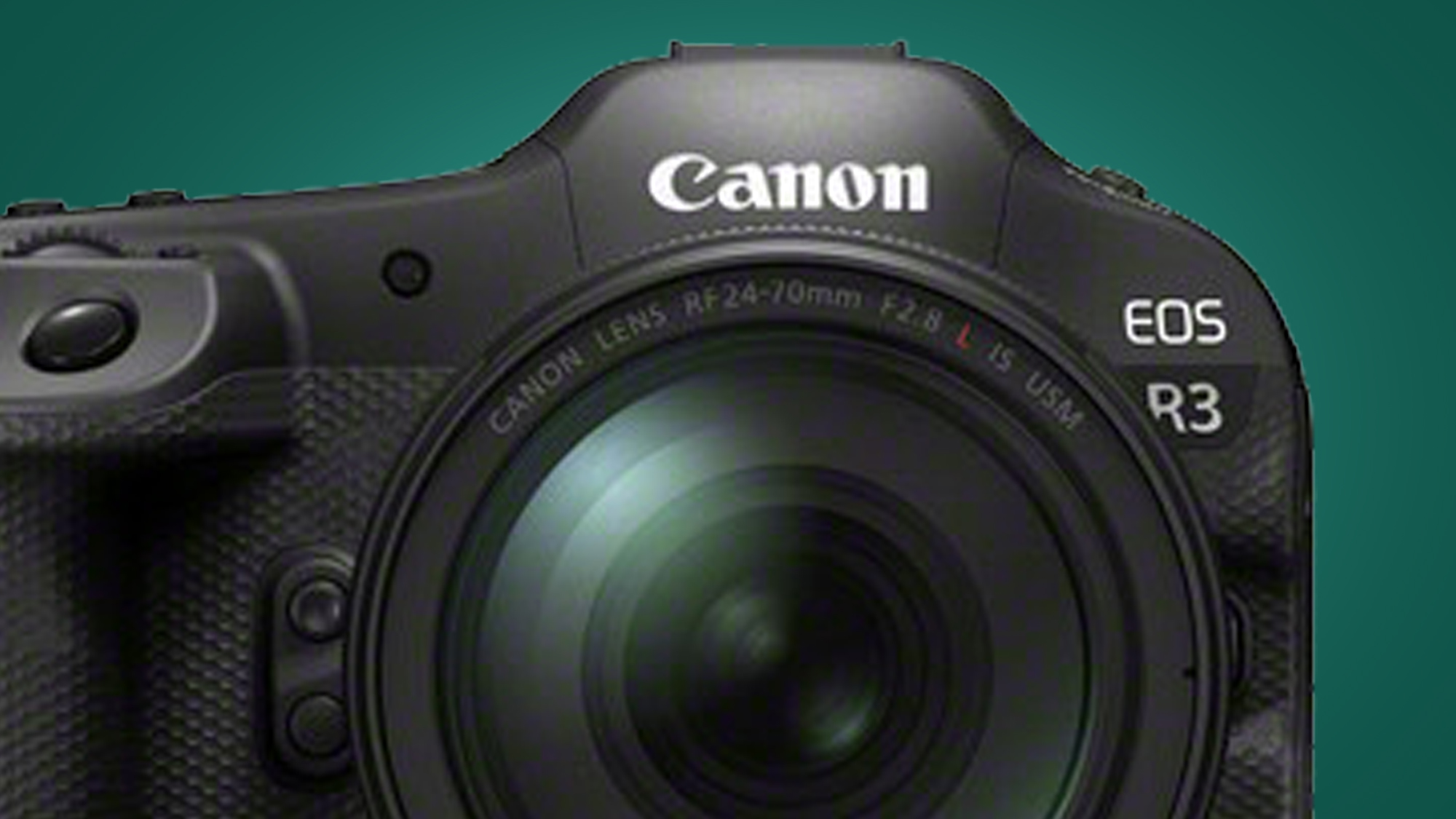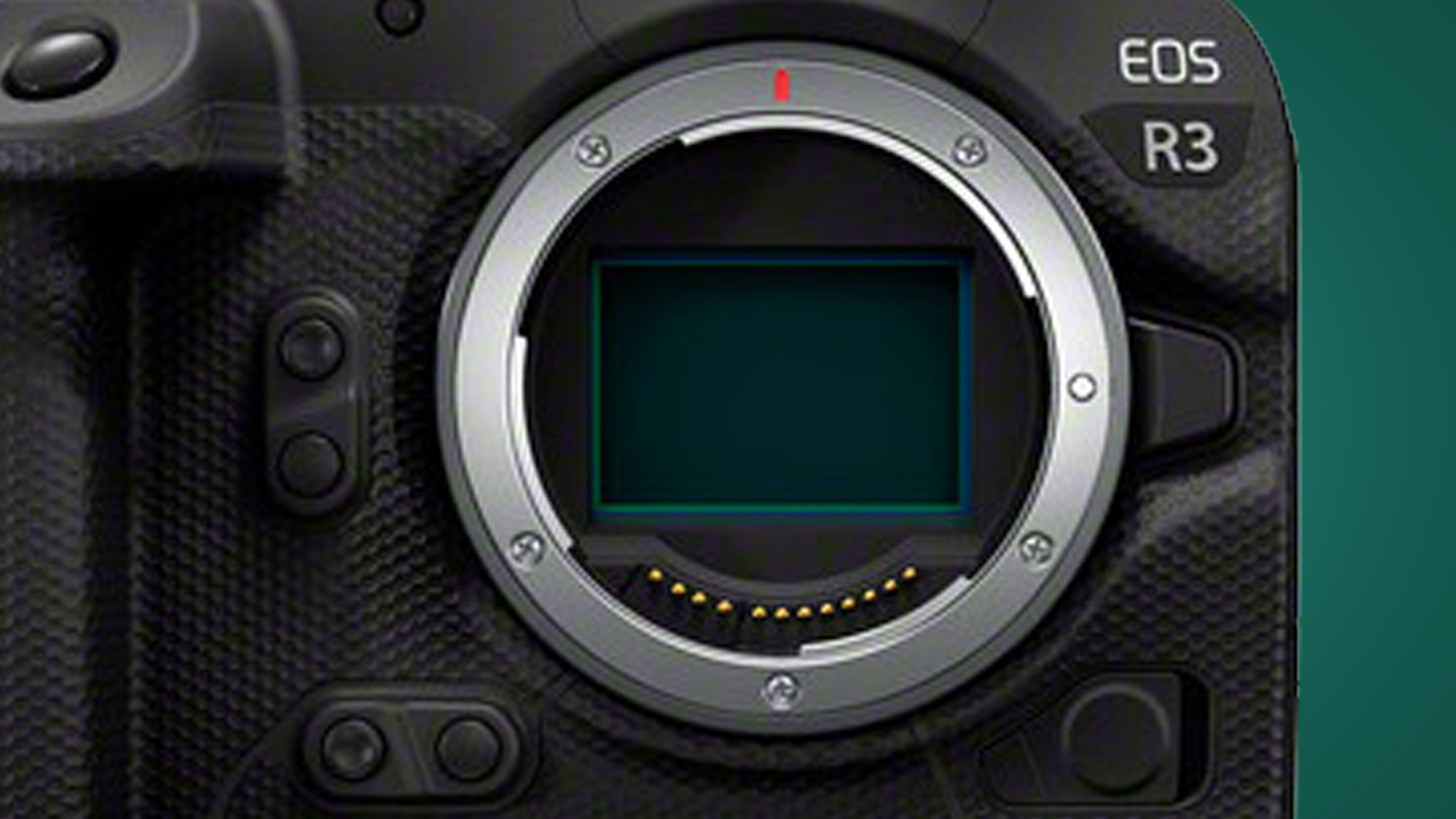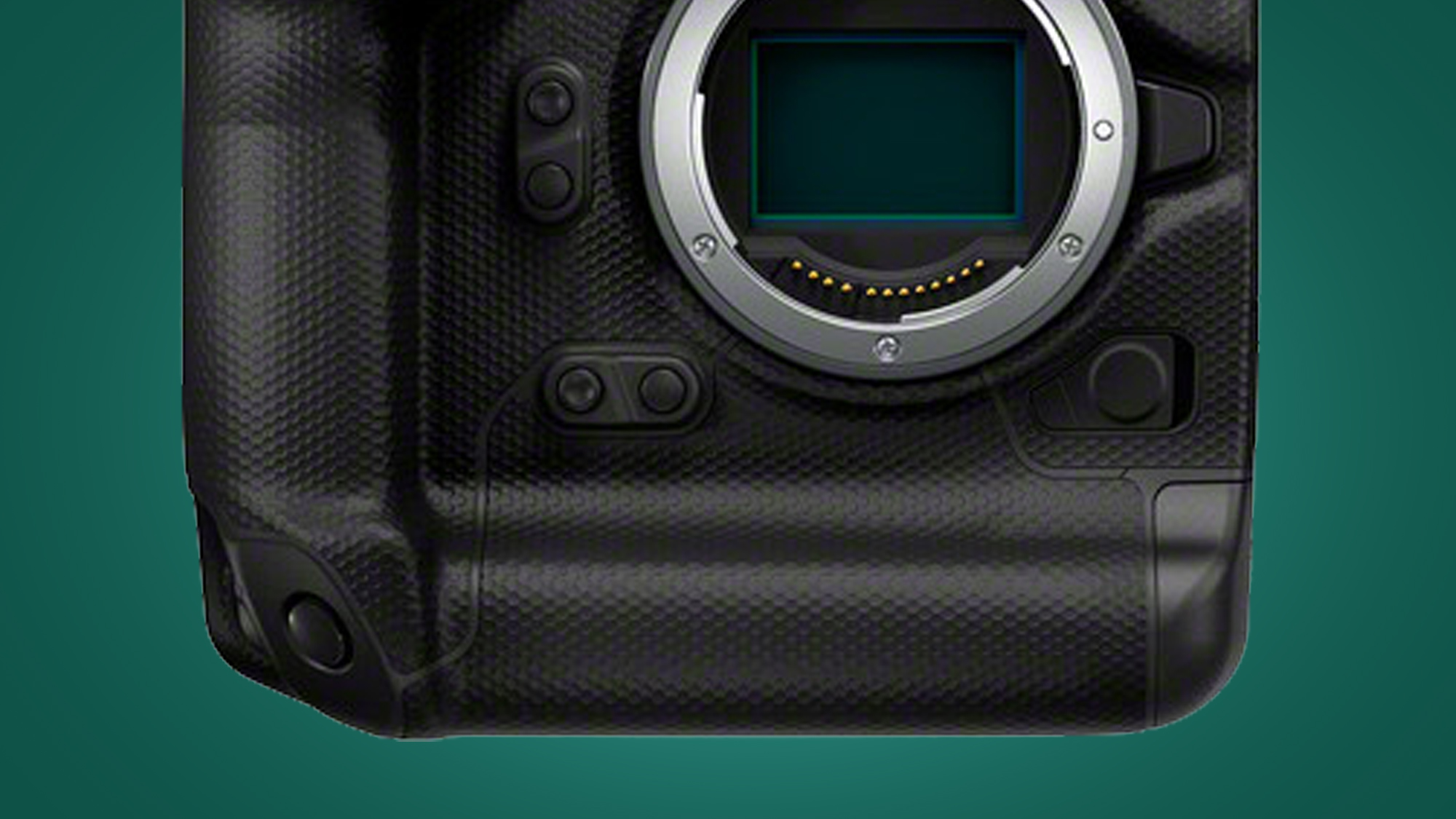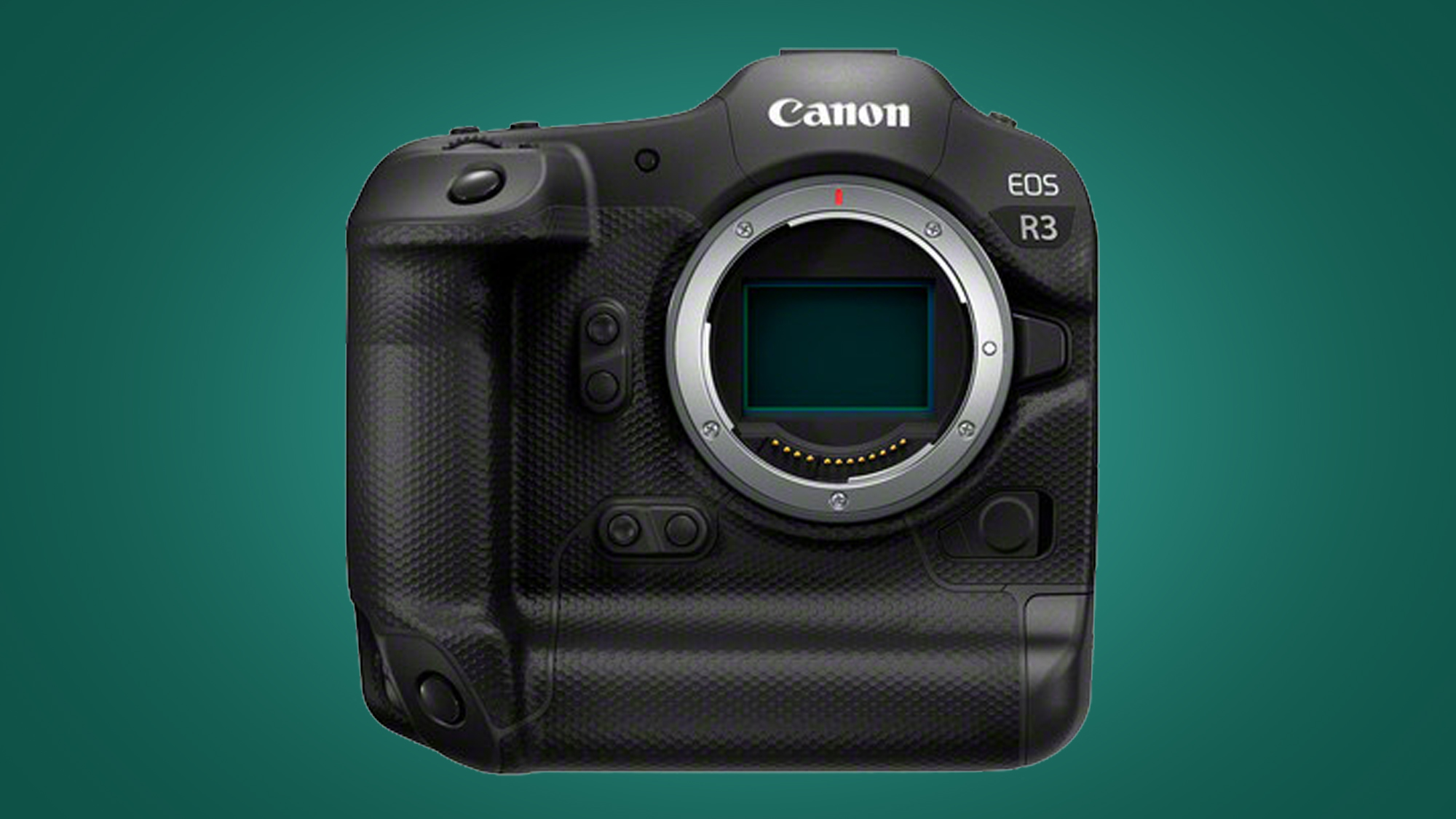The Canon EOS R3 has just been teased in a surprise 'development announcement' from the camera giant – and it's going to be Canon's most powerful full-frame stills camera for sports photographers.
Like a cross between a Canon EOS 1D X Mark III DSLR and a Canon EOS R5, the EOS R3 is effectively a mirrorless flagship for pro sports and news shooters, promising to bring lightning-fast 30fps burst shooting when you use the electronic shutter, and some next-generation Dual Pixel CMOS autofocus skills.
Perhaps most intriguing, though, is its new Eye Control Function, which will let you move the autofocus point with your eye through the electronic viewfinder. It's a feature we first saw on film cameras like the Canon EOS 3, so we're excited to try out its new incarnation on the EOS R3.
Exactly when we'll be able to do that, though, remains a mystery – Canon hasn't yet provided a release date for its new mirrorless camera, and there are a lot of missing details, too. For example, it's not yet clear what resolution the EOS R3's new Canon-made sensor will have, or how much the camera will cost.
For now, though, here's everything we do know about the Canon EOS R3, plus our early thoughts on what it means for the fiercely competitive pro mirrorless camera battle.
- These are the best mirrorless cameras you can buy right now

Cut to the chase
- What is it? Canon's new flagship full-frame mirrorless camera for pro sports photographers.
- When can I buy it? We don't know yet, as Canon has only made a 'development announcement' for the EOS R3.
- What features does it have? Confirmed features for the EOS R3 are that it will have a Canon-developed stacked BSI (backside-illuminated) sensor, 30fps burst shooting with the electronic shutter, an updated version of Dual Pixel CMOS AF, a weather-resistant body, and the ability to let you move autofocus points with your eye through the viewfinder. We don't yet know its sensor's resolution, or its price.
Canon EOS R3 release date and price
- No official release date or pricing yet
- Could go on sale in time for the Tokyo Olympics
- Price expected to be nearer EOS 1D X Mark III than EOS R5
Canon hasn't yet revealed when the Canon EOS R3 will be fully launched or available to buy. This is just a development announcement, but if the Canon EOS R5 launch is anything to go by, we can expect it to arrive on shelves within the next six months or so.
The Canon EOS R5 development announcement was in February 2020, and that camera became available to buy in July 2020, so there was a five-month wait. That said, the Canon EOS R3 would be an ideal camera for sports photographers to take to the Tokyo Olympics, which are due to start on July 23 – so it's possible that the R3 will get a slightly quicker turnaround.

How much will it cost? Again, Canon hasn't yet given any official indication. What the camera giant has said, though, is that the Canon EOS R3 sits somewhere in between the Canon EOS 1D X Mark III and the Canon EOS R5, so we can make some educated guesses as to the price based on those two cameras.
The 1D X Mark III's body-only launch price in January 2020 was $6,499 / £6,499 / AU$9,999, while the EOS R5 arrived more recently, in July 2020, for $3,899 / £4,199 / AU$6,899. Given that the EOS R3 in many ways combines the best of both cameras, and has a brand-new sensor, we'd expect it to be closer to the former of those two cameras than the latter, but we'll have to wait for the full announcement to know for sure.
Canon EOS R3 specs and features
- Will have a new Canon-developed stacked BSI CMOS sensor
- 30fps burst shooting with AF/AE tracking
- New Eye Control Function for moving AF points with your eye
Canon has revealed some of the EOS R3's key features, but a lot remains unknown. In music festival terms, we know a couple of the headliners, but a lot of the lineup is filled with question marks.
There are five big, confirmed acts though. Firstly, the EOS R3 will have a new Canon-developed stacked BSI (backside-illuminated) CMOS sensor. This is interesting for a couple of reasons. It's been made by Canon, for a start, so should integrate nicely with the camera's Digic X processor.
But the big news is that this full-frame sensor will have a 'stacked' design, like the chip seen in the Sony A1, and the one Nikon has promised for its incoming sports flagship, the Nikon Z9. The benefits of stacked sensors are their speedy data read-out speeds, which generally means fast burst shooting and autofocus speeds.
What we don't yet know is what resolution the EOS R3's sensor will be. Given that Canon is billing it as a "high-speed" camera that can shoot at 30fps continuously, we reckon the EOS R3 is likely to be on the lower end of the megapixel scale. For example, the Canon EOS 1D X Mark III and Canon EOS R6 both have 20.1MP sensors, so the EOS R3 may fall in between those models and the 45MP EOS R5. Again, we can expect Canon to reveal all in the next few months.

Perhaps more interesting are the Canon EOS R3's autofocus powers. Canon has promised that the camera will have next-generation Dual Pixel CMOS AF that can track your subjects' eyes, heads and bodies at high speeds. Intriguingly, Canon has said that it will add a new subject to the camera's AF tracking, but that this is "yet to be disclosed". So far, its high-end cameras can track humans, animals and birds – so what's next, insects perhaps? Now that would be impressive.
Whatever that new subject-tracking feature is, it might just be overshadowed by the EOS R3's other autofocus trick: Eye Control Function. What is it? Well, back in the days of film cameras like the Canon EOS A2E (known as the EOS 5 outside the US) and Canon EOS 3, Canon had a feature called 'eye-controlled autofocus' that let you choose an AF point simply by looking at it in the viewfinder.
It was a highly impressive technology for the time, and Canon has promised a "new and improved" version of it for the EOS R3. The main benefit of the feature is that it's potentially quicker to nail your focus point than using buttons; and while the original incarnation of the tech was renowned for being a little hit-and-miss, we're excited to try out Canon's new Eye Control Function on the R3.
Aside from that new Canon-made sensor and those autofocus powers, the fourth big new feature announced for the EOS R3 is that it'll be able to shoot 30fps with full autofocus tracking and auto-exposure when you use the electronic shutter. That's an impressive headline feature that theoretically matches the Sony A1's top shooting speed, but it comes with a lot of caveats.
Firstly, Canon hasn't said whether or not this involves an image crop, or what kind of files will be supported at the top 30fps speeds – on the Sony A1, for example, you can shoot compressed raw and JPEGS, but not uncompressed or lossless raw files. Also, burst shooting speeds are dependent on what lens you're shooting with, so it's not clear which lenses will support 30fps shooting.
Still, the Canon EOS R3 is certainly shaping up to be a speedy mirrorless alternative to the EOS 1D X Mark III for pro sports snappers. We don't yet know what kind of video it will shoot, what its resolution will be or how much it will cost – but one final thing we can be pretty sure of is that it'll have bomb-proof build quality...
Canon EOS R3 design and build
- Same durability and weather-resistance as EOS-1 series
- Integrated grip for pro-level handling and battery life
- No news yet on the R3's electronic viewfinder
So far, Canon has only released two front-on photos of the EOS R3, but there are a couple of things we know about the camera's design.
First, Canon is promising that the R3 will have the same level of dust- and water-resistance as its classic EOS-1 series DSLRs. These are renowned for being almost indestructible professional cameras, so that's good news for the R3's durability.

As you can see in the photos, the R3 also has an integrated grip, which isn't just there for comfortable handling – it also houses a big battery that should keep the camera going far longer than most current mirrorless cameras. It might struggle to manage the 1D X Mark III's 2,850 images per charge, but we're expecting a huge improvement on the EOS R5's meagre 320 shots when using the EVF (or 490 shots if you're using the LCD).
As important as battery life for pro sports shooters is the viewfinder, but so far Canon hasn't provided any details about the EOS R3's EVF. We are expecting big things, though, given that Canon touted the "optical viewfinder experience" of the 1D X Mark III as one of the strengths the R3 will inherit from its DSLRs. So expect a viewfinder with a very high resolution and refresh rate, which will be up to the demands of pro sports shooters who can't afford to miss a millisecond of action.

Canon EOS R3 early thoughts
The Canon EOS R3 is something of a surprise announcement. Recently, the rumor mill has mainly been talking up the possibility of a Canon EOS R1 flagship – so does the arrival of the R3 mean we now won't see an R1?
Not necessarily. From the specs we've seen so far, it feels like the Canon EOS R3 is more like a supercharged, pro-friendly version of the Canon EOS R6, rather than the high-megapixel, 8K-shooting flagship we're expecting the rumored R1 to be.
In this sense, the Canon EOS R3 is likely to be more of a rival to the Nikon Z9 than the Sony A1. And like Nikon's camera, it's something of a watershed moment that will see professional sports photographers move from the DSLR format to mirrorless.
We're still expecting to see Canon reveal its answer to the Sony A1 at a later date, but for now the Canon EOS R3 is an exciting glimpse of where its high-speed sports cameras are headed.
- Canon EOS R1 release date, price, rumors and leaks
- Nikon Z9 release date, price, specs and rumors
- These are the best cameras in the world right now
from TechRadar - All the latest technology news https://ift.tt/3sgzOlU
